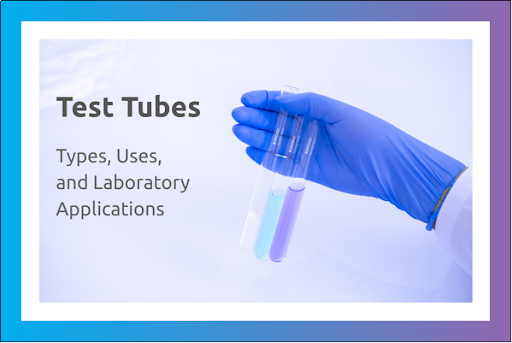



In laboratory workflows, whether analytical, pharmaceutical, or industrial, test tubes continue to serve as foundational tools. Their role spans sample preparation, reagent heating, solvent evaporation, digestion processes, and intermediate storage. And yet, the test tube function remains one of the most overlooked considerations in procurement decisions.
Incorrect tube type, glass grade, or fitment can lead to compromised results, loss of sample integrity, or operational inefficiencies. For process chemists, quality control specialists, and formulation scientists, selecting the correct test tube, matched to the application, heating protocol, and equipment interface, is essential.
This article outlines the key types of test tubes, their specific application contexts, and how to match tube specifications to laboratory needs with minimal deviation risk.
At Borosil Scientific, we manufacture precision-grade test tubes from low-expansion 3.3 borosilicate glass. This ensures chemical resistance, mechanical stability, and low thermal expansion, suitable for dry heat sterilisation, autoclaving, flame application, and chemical digestion.
| Design Type | Feature | Application Fit |
| With Rim | Rolled rim for safety and grip | Flame exposure, heating, and agitation |
| Without Rim | Fire-polished open end, no rim | Centrifugation, block heating |
| With an Internal Glass Stopper | Ground glass joint for air-tight sealing | Reagent prep, storage, titration |
| Funnel Test Tube | Tapered upper neck for digestion racks | Kjeldahl digestion, acid-based digestion |
All test tubes are annealed to relieve residual stress and prevent thermal fracture under repeated heating cycles.
The test tube functions in analytical workflows revolves around containment during pre-treatment, digestion, or extraction. Where samples must be heated, shaken, evaporated, or centrifuged, mechanical integrity becomes critical.
The funnel test tube is tailored for compatibility with Kjeldahl Oracle and Kjeldahl Magnus Digesters. These digestion systems operate at elevated temperatures, typically using sulfuric acid and catalysts to break down organic material for nitrogen analysis.
| Digester Series | Tube Interface | Feature |
| Kjeldahl Oracle | Fixed block design | Suction port and tube rack compatible |
| Kjeldahl Magnus | Auto-lift sample movement | High heat resistance and uniformity |
These test tubes are used during the digestion stage prior to ammonia distillation and titration. Their geometry supports safe vertical evaporation and better control over frothing in high organic-load samples.
At Borosil Scientific, the test tubes come with precision-ground internal stoppers. These tubes are typically used when samples must be stored without exposure to air or moisture, which is often the case with titrants, indicators, or prepared analytical solutions.
For chromatographic workflows, especially when preparing working solutions for HPLC vials, storing aliquots in test tubes ensures that the standard remains uncontaminated before final dilution.
Choosing the correct test tube function in laboratory is a matter of aligning the equipment with procedural demands. Incorrect selection can delay workflows or introduce unnecessary breakage.
| Lab Use Case | Recommended Product |
| Heating and boiling of salts | With Rim |
| Preparation of reaction intermediates | With Stopper |
| Nitrogen digestion of organic material | Funnel Type |
| Centrifugation of dissolved solids | Without Rim |
Technicians and process chemists can refer to the Borosil Scientific e-Catalogue to cross-match compatibility between tubes, racks, and allied systems. All test tube functions in the laboratory are manufactured to dimensional tolerances that support automated systems and mechanical holders.
All test tubes are autoclavable. However, a long life is only possible when proper care is followed:
Where batch preparation is involved (such as for GC vials or reagent reservoirs), cleaning SOPs should include traceability of tubes to cleaning cycles and drying schedules.
In regulated analytical and pharmaceutical settings, test tubes are not generic commodities. Their material quality, dimensional accuracy, and heat resistance directly impact data reliability and procedural efficiency. From digestion systems to sample prep benches, the test tube remains critical to outcome reproducibility.
At Borosil Scientific, every test tube, from the 9800 with rim to the 9829 stoppered type and the digestion-specific 6150 funnel tube, is engineered to meet stringent quality control benchmarks. Whether you’re upgrading an existing digestion line or preparing solvents for analytical vials, our products integrate with lab processes to support accuracy, durability, and safety.
To explore the complete range, refer to the Borosil Scientific e-Catalogue or reach out to our application team for cross-equipment guidance. We’re here to support your process, not just deliver a product.